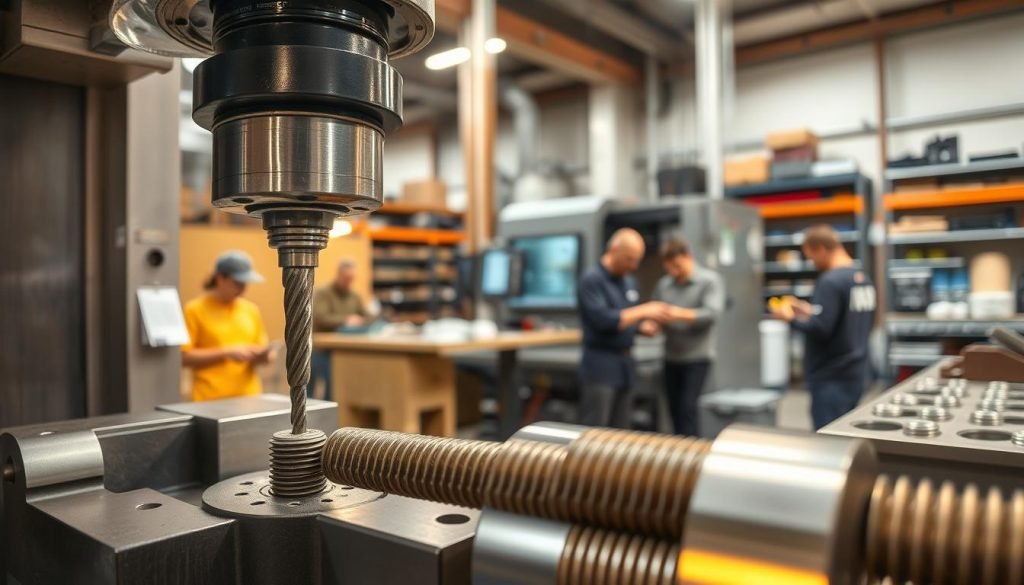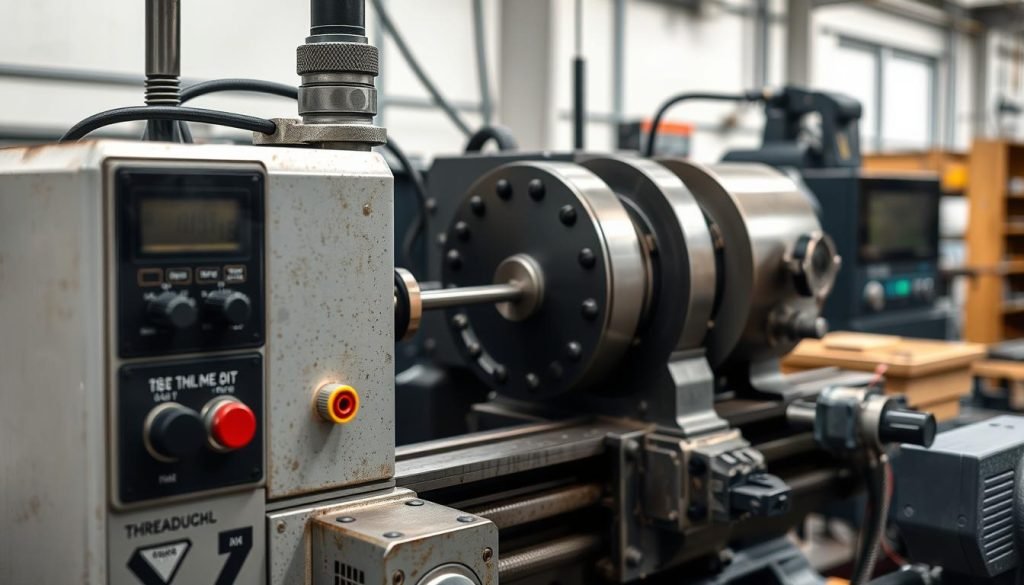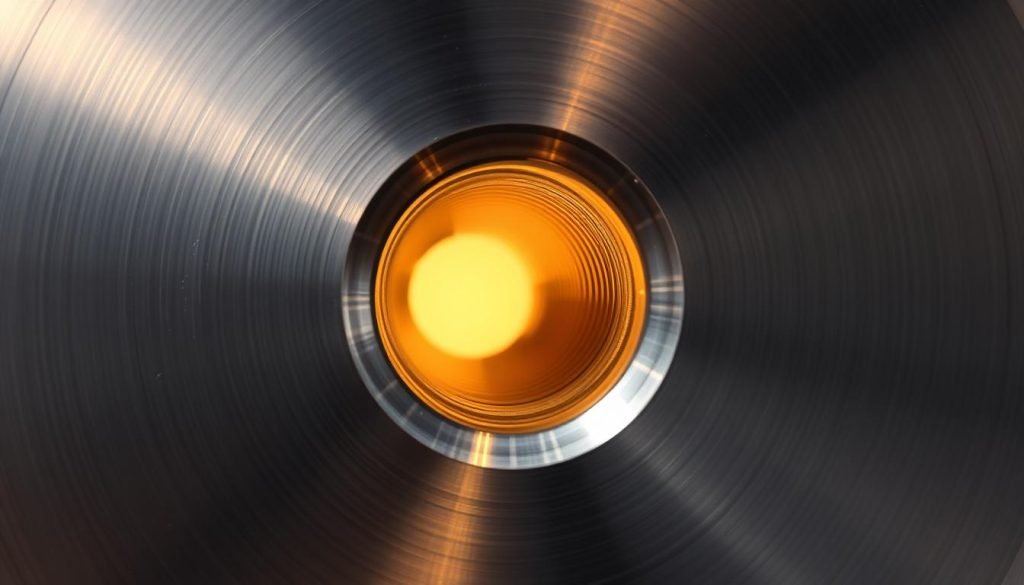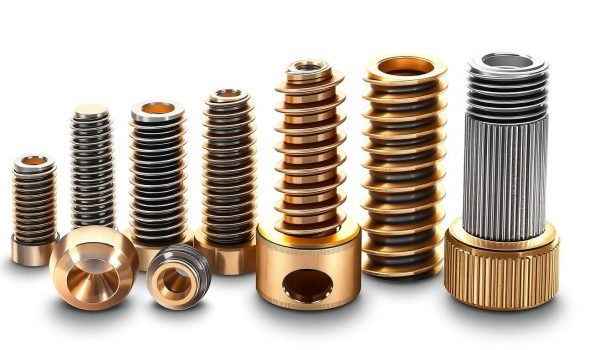Did you know that nearly every device you use daily relies on threaded holes for assembly and functionality? From the smartphone in your pocket to the engine in your car, these precision-engineered cavities play a crucial role in modern manufacturing.
A hole with internal threads is designed to mate with external threads on screws, bolts, or studs, creating high-strength connections. The quality of these connections is paramount in ensuring the durability and performance of the final product.
As we explore the world of threaded holes, you’ll gain insights into their types, manufacturing methods, and the considerations that go into creating them. Whether you’re involved in machining or simply curious about the technology behind your favorite gadgets, this guide will provide you with a comprehensive understanding of threads and their importance in manufacturing.
What Is a Threaded Hole?

A threaded hole is a hole drilled into a material that has been machined to accept a threaded fastener, such as a screw or bolt. The process of creating a threaded hole involves drilling a pilot hole to the correct diameter, followed by threading the hole using a tap or die. The resulting threaded hole allows for the secure fastening of parts together.
Key Features and Terminology
Several key features and terms are associated with threaded holes. The thread pitch refers to the distance between adjacent thread peaks, with finer pitches offering better precision and coarser pitches enabling faster assembly. Thread size designations, such as M8 or 1/4-20 UNC, communicate critical information about the thread’s major diameter and threads per unit of measurement.
The hole diameter before threading, known as the pilot hole, must be precisely calculated based on the desired thread size and material properties to ensure optimal thread formation. Additionally, thread depth considerations differ between blind holes, which have a bottom, and through holes, which pass completely through the material, affecting tool selection and machining approach.
Types of Threaded Holes
Threaded holes are a crucial component in various industries, and understanding their types is essential for selecting the right fastening solution. You need to be aware of the different types to ensure the structural integrity and performance of your project.
Blind Holes vs. Through Holes
Threaded holes can be categorized into two main types: blind holes and through holes. A blind hole is a threaded hole that does not pass through the material, whereas a through hole is a threaded hole that goes completely through the material. The choice between these two types depends on the specific application and the desired outcome.
You should consider the material and the purpose of the threaded hole when deciding between a blind or through hole. For instance, blind holes are often used when you need to conceal the end of a fastener or when working with thin materials.
Methods for Manufacturing Threaded Holes
Creating threaded holes accurately is vital for the assembly and functionality of many mechanical parts. Various methods are employed to manufacture threaded holes, each with its own advantages and applications.
Thread Tapping
Thread tapping is one of the most common methods for creating threaded holes. It involves using a tap to cut threads into a pre-drilled hole. The process requires precision to avoid damaging the material or breaking the tap.
Thread Milling

Thread milling is a versatile method that uses a milling cutter to create threads. This technique is particularly useful for producing large threads or threads in hard materials.
Thread Rolling
Thread rolling is a cold-forming process that displaces material to create threads, resulting in stronger threads without removing material. It’s ideal for producing high-strength threads in ductile materials.
Thread Cutting on a Lathe
Thread cutting on a lathe involves using a single-point cutting tool to create threads on a workpiece. This method is highly accurate and suitable for producing external threads.
Threaded Inserts
Threaded inserts are metal sleeves installed into a pre-drilled hole to provide durable threading in materials that are too soft or prone to thread wear. They are used in various applications, including repair and assembly.
Different types of threaded inserts serve specific purposes, such as key-locking inserts for high-vibration environments and self-tapping inserts for creating mating threads during installation.
By understanding the different methods for manufacturing threaded holes, you can choose the most appropriate technique for your specific application, ensuring the strength and durability of your parts.
Considerations for Making Successful Threaded Holes
To ensure the success of threaded holes, several key considerations must be taken into account. The process involves understanding the material properties, selecting the right tool, and determining the appropriate hole size and depth.
Material Selection and Properties
The material you are working with plays a crucial role in determining the success of threaded holes. Different materials have varying properties that affect the threading process. For instance, harder materials require more robust taps and techniques, while softer materials may require adjustments to avoid damage.
Hole Size and Depth
The size and depth of the hole are critical factors in creating successful threaded holes. The hole size must be appropriate for the tap you are using, and the depth must be sufficient to accommodate the required thread length. Incorrect hole size or depth can lead to poor thread quality or tool breakage.
Tool Selection
Tool selection is a vital consideration in making successful threaded holes. You can use either a cutting or forming tap to create internal threads. Cutting taps remove material to create threads, while forming taps displace material. The choice between these tools depends on the material texture and bolt diameter. Taper taps are ideal for starting threads, while bottoming taps are used to thread to the bottom of blind holes.
Step-by-Step Guide to Creating Threaded Holes

Creating threaded holes is a precise process that requires attention to detail and the right techniques. To achieve high-quality threads, you need to follow a systematic approach that involves several key steps.
Drilling the Pilot Hole
The first step in creating a threaded hole is drilling a pilot hole. This hole should be slightly smaller than the tap’s major diameter to ensure proper threading. You must carefully align the drill bit with the workpiece surface to avoid any misalignment.
Chamfering the Hole
After drilling the pilot hole, chamfering the hole’s entrance is essential. Chamfering helps guide the tap into the hole, reducing the risk of tap breakage and ensuring a smooth tapping process. You can use a chamfering tool or a drill bit with a chamfering attachment to achieve the desired chamfer.
Tapping Process
The tapping process involves using a tap to create internal threads within the hole. You start by aligning the tap perpendicular to the workpiece surface, using a tap guide or drill press if available. Apply cutting fluid or tapping compound to reduce friction and improve thread finish. For manual tapping, use the “two turns forward, one-half turn back” technique to break chips and prevent tap binding. Depending on the hole’s depth and type, you may need to use a sequence of taps, starting with a taper tap, followed by a plug tap, and finishing with a bottoming tap for blind holes.
By following these steps and using the appropriate taps, you can achieve high-quality threaded holes that meet your project’s requirements.
Threaded Hole Applications by Industry
Threaded holes are a fundamental feature in many industrial applications, providing a secure and reliable means of fastening. You can find them in various industries, each with its unique requirements and challenges.
Manufacturing and Automotive
In manufacturing and automotive industries, threaded holes are used extensively for assembling parts and components. The use of high-quality materials and precision machining techniques ensures the production of durable and reliable threaded holes.
Aerospace and Construction
Aerospace and construction industries demand threaded holes that meet stringent quality standards. The surface finish of threaded holes is critical in these applications, as it affects the overall performance and longevity of the components.
Electronics and Consumer Goods
In electronics and consumer goods, threaded holes are used in the assembly of various products, from household appliances to electronic devices. The precision of threaded holes is crucial in these applications to ensure proper fit and functionality.
Medical Devices
Medical devices, such as surgical instruments and implants, require threaded holes that are manufactured from biocompatible materials. Advanced surface treatments are often applied to enhance the performance and safety of these components. You can rely on high-quality machining processes to produce threaded holes that meet the stringent requirements of the medical industry.
Common Problems and Solutions with Threaded Holes
When working with threaded holes, several common problems can arise that may compromise the integrity of your project. These issues can range from stripped threads to broken taps and misalignment problems.
Stripped Threads
Stripped threads occur when the threads in a hole are damaged, often due to excessive torque or corrosion. To fix this, you can use thread repair kits that contain specialized inserts to restore the thread integrity.
Broken Taps
A broken tap can be a significant issue, especially if it’s deep within a hole. To address this, use a tap extractor or carefully drill out the broken tap, taking care not to damage the surrounding material, which can generate unwanted chips.
Misalignment Issues
Misalignment can happen when the tap is not correctly aligned with the hole. To prevent this, ensure proper alignment before tapping, and consider using a jig to guide the tap, especially in complex assemblies involving a screw.
Thread Damage Repair
Thread damage can result from various factors, including corrosion or wear. Minor damage can be repaired by re-tapping the hole, while more severe cases may require thread repair inserts to reinforce the threads in the hole.
Conclusion
As we conclude our exploration of threaded holes, it’s clear that their significance extends far beyond their size. Threaded holes are fundamental components in modern manufacturing, providing secure mechanical connections across countless applications and industries.
You now understand the various types, machining methods, and design considerations for threaded holes, which are essential for creating high-quality, durable mechanical assemblies. For your next project requiring threaded holes, consider consulting with CNC machining experts to get instant quote and guidance on optimal thread specifications and quality manufacturing methods.




